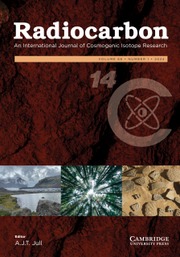No CrossRef data available.
Article contents
Reservoir Effects from Shells of Tell Abraq, Sharjah Emirate, UAE
Published online by Cambridge University Press: 19 May 2025
Abstract
We present reservoir effects on shells of species Terebralia palustris and Marcia spp. that were recovered during archaeological excavations at the multi-period site of Tell Abraq, Sharjah Emirate, UAE (This paper was presented at the combined 24th Radiocarbon and 10th Radiocarbon & Archaeology International Conference, Zurich, Switzerland, Sept. 2022.). The site was inhabited during the mid to late Holocene. It is situated in a lagoonal environment with former mangrove forests at the Arabian Gulf coast of southeast Arabia. Due to availability in the immediate proximity, shellfish played an important role for the local subsistence throughout the site’s occupation. Tell Abraq provides a well-defined and stratigraphically controlled archaeological context for investigations on the reservoir effect of the two species chosen. Crucial for the determination of the marine reservoir effect is comparison with contemporaneous terrestrial carbon samples. We discuss the data in a wider context with respect to results obtained at other sites.
Information
- Type
- Research Article
- Information
- Copyright
- © The Author(s), 2025. Published by Cambridge University Press on behalf of University of Arizona


